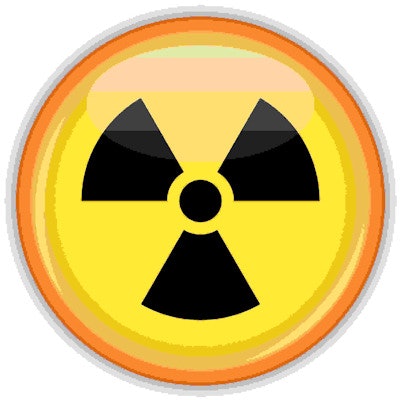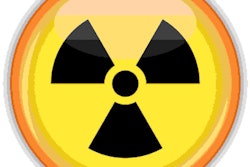
The growing use of radiation dose tracking software has revealed an inconvenient truth: There are substantial differences around the world in the amount of radiation dose being used for CT scans, according to a Swiss study published online in the American Journal of Roentgenology.
Researchers used radiation dose tracking software to study the dose used in CT scanning by radiology departments from select North American and European medical institutions. They found that CT dose levels measured at California hospitals and from facilities reporting to the American College of Radiology (ACR) Dose Index Registry (DIR) were up to 240% higher than the dose used at their facility, University Hospital Basel (AJR, September 12, 2017).
The results indicate that dose tracking software can help hospitals establish global diagnostic reference levels (DRLs) that can help standardize and reduce CT dose without compromising diagnostic confidence. This helps to ensure that all patients are scanned in a standardized manner, institutions are optimizing their performance, and benchmarks for dose are being set at the national and international levels, senior author Dr. Sebastian Schindera told AuntMinnie.com in an email.
Radiation tracking
The increased use of CT in clinical diagnosis and follow-up care has been accompanied by scrutiny of the radiation dose that patients receive. Recent studies have also found that there can be wide variation in radiation dose, even between sites in the same health network.
 Dr. Sebastian Schindera from Kantonsspital Aarau (formerly at University Hospital Basel).
Dr. Sebastian Schindera from Kantonsspital Aarau (formerly at University Hospital Basel).In one particular case cited by the researchers, a 46-year-old woman with acute pancreatitis underwent 14 CT exams in a six-month period. A number of these scans could have been replaced with imaging modalities that use nonionizing radiation, but healthcare providers had no way of recognizing the rising cumulative dose the patient was being exposed to, according to Schindera.
Due in part to the fact that CT delivers the largest radiation dose burden among all imaging modalities in Switzerland, Schindera and colleagues have been working on addressing radiation protection strategies for the past 15 years, in particular those that would help providers see how much dose patients are getting.
"Over the years, we realized the lack and need ... of automatic solutions that would help institutions visualize their practice patterns in an easy-to-interpret form," he told AuntMinnie.com.
Radiology departments around the world have been attempting to address this need by establishing diagnostic reference levels for radiation dose, and in many locations, these standards have helped to reduce CT radiation doses. But disparities in CT dose persist, with official reports citing sizable differences between European and North American DRL registries, according to the researchers.
As a way to analyze the benefits of DRLs internationally, the Swiss researchers used radiation-tracking software (Radimetrics, Bayer HealthCare) to seek, analyze, and archive dose metrics from eight CT scanners at six local medical institutions in Basel, and then compare them with various international dose registries.
Radiation-tracking software provides four dose metrics: CT dose index volume (CTDIvol), dose-length product (DLP), size-specific dose estimate (SSDE), and effective dose. The group used the software to automatically cull data from the 85,187 CT scans acquired, all of which was subsequently stored in three local servers, anonymized, and then uploaded into a single server referred to as the patient dose repository.
The researchers then compared this information with dose data from the ACR Dose Index Registry, University of California medical centers, and University of Toronto medical centers (published in 2015), as well as from medical centers throughout Switzerland (2007-2009), the U.K. (2010-2011), and Portugal (2011-2012).
Global differences
After comparing the data, the researchers found that the diagnostic reference levels of the local Basel registries were considerably lower than those from the ACR Dose Index Registry, as well as from all of the countries examined.
| CT radiation dose variation across imaging sites | |||||||
| Anatomic region | Mean CTDIvol (mGy) at 75th percentile | ||||||
| ACR DIR | California | Toronto | U.K. | Portugal | Switzerland | Basel | |
| Head | 62 | 62 | 53 | 60 | 75 | 65 | 40 |
| Thorax | 17 | 17 | -- | 12 | 14 | 10 | 5 |
The data highlight a stark contrast across radiation dose among registries. Notably, CTDIvol values for the 75th percentile from the ACR Dose Index Registry and from California were both higher than those of the Basel registry by 55% for CT scans of the head and 240% for the thorax.
Although dose reported from the Basel registry was lower, the researchers still saw broad variation among the eight CT scanners used. For example, the median CTDIvol for CT of the thorax from two scanners of the same type were 8.4 mGy and 1.8 mGy -- a fourfold difference.
Collectively, the inconsistency in CT radiation dose used at local neighboring facilities and the wide-ranging differences among distinct registries suggest the need for dose optimization, according to the authors. With a capacity to analyze massive stores of data, dose tracking software may help fill this gap.
"Besides making one aware of the radiation doses, [dose tracking software] helps identify the practice patterns in a department easily and can help the management to identify and address areas that would significantly improve patient throughput in the department and enable efficient use of scanners," Schindera said.
The primary limitation of the study was that the researchers did not review the CT scans and their indications because the data only included dose metrics and not the actual CT images.
"Until now, the reference values were based on selected cases, but in the era of big data, basing decisions on a handful of cases is archaic," Schindera told AuntMinnie.com. "This software provides a realistic and broad overview of all scans and not just the select cases which might be the 'best reflection' of an institution."
A paradigm shift of this scale may take some time, but studies like this one could help set the stage for establishing international radiation dose registries one day.
"At the moment, we have optimized doses in the nodal institution and with great success," he said. "We intend to do so in other institutions in the future."




















